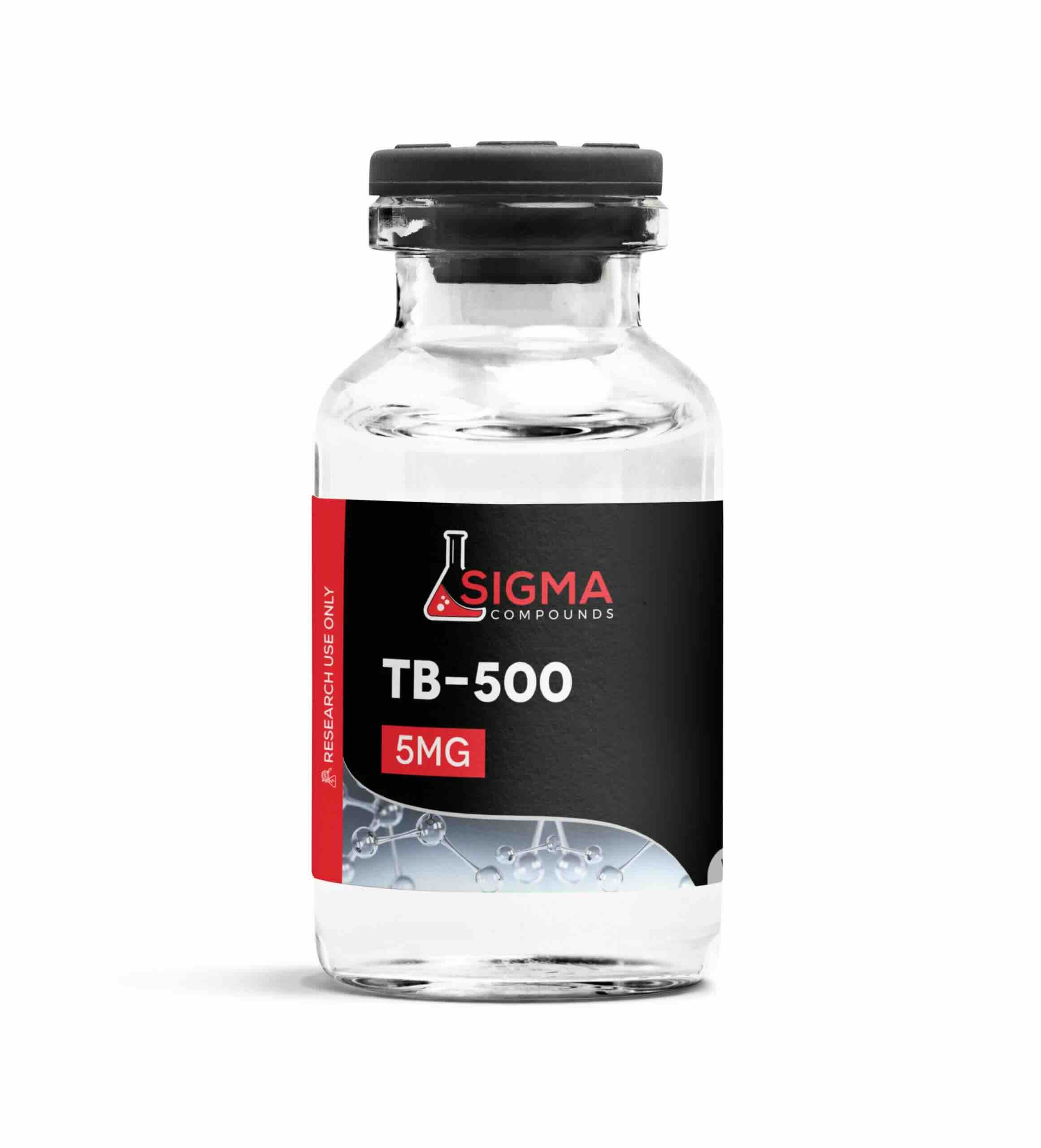
TB-500 / Thymosin Beta-4
Overview
TB-500, also known as Thymosin Beta-4, is a naturally occurring peptide present in almost all human and animal cells. The primary function of TB-500 is to promote healing, encourage cell growth, and enhance cell migration and proliferation. Its discovery can be traced back to the 1960s, where it was isolated from the thymus gland as part of research into thymosins, a family of peptides thought to be involved in immune and tissue repair processes.
What Does TB-500 Do?
TB-500 is primarily known for its ability to:
1. Promote Healing: It accelerates wound repair and healing in the skin, muscle, heart, eyes, and other tissues.
2. Anti-inflammatory Properties: It reduces inflammation, which is crucial for recovery from injuries.
3. Improve Flexibility: By increasing actin polymerization, it contributes to greater cell flexibility and movement.
Mechanism of Action
TB-500 exerts its effects by up-regulating actin, an essential protein that forms part of the cytoskeleton of all eukaryotic cells. Actin plays a vital role in cell proliferation, migration, and morphology. TB-500’s role in actin regulation helps in tissue repair and injury recovery.
While TB-500 has shown potential in various preclinical studies, especially in wound healing and cardiac injury models, there is a lack of comprehensive clinical trials in humans to fully establish its efficacy and safety profile. Most of the existing data is derived from animal studies and cell culture experiments.
Use in Athletic Performance Research
In the context of athletics, TB-500 has gained attention for its supposed ability to speed up recovery from injuries, reduce inflammation, and improve flexibility. However, its use in this arena is off-label and not supported by clinical evidence. The World Anti-Doping Agency (WADA) has banned its use in competitive sports due to its potential to confer an unfair advantage in healing and recovery.
TB-500 is a promising peptide with significant potential in tissue repair and wound healing. However, its therapeutic applications, safety, and efficacy in humans require further validation through rigorous clinical trials. The current use in athletics, though popular, is not supported by scientific evidence and is considered unethical and illegal in regulated sports contexts.
Dosage
To calculate dosages for TB-500 from a 5 mg vial mixed with 2 mL of bacteriostatic water, using a 0.5 mL, 50-unit insulin syringe, let’s consider both a twice-per-week and a once-per-day protocol for a 4-week cycle. Please note that these calculations are for informational purposes only and actual dosing should be determined by a healthcare professional.
Concentration Calculation
5 mg of TB-500 is reconstituted in 2 mL of water.
Since 1 mg = 1000 mcg, the total amount is 5000 mcg.
The concentration is 5000 mcg / 2 mL = 2500 mcg/mL.
Twice-Per-Week Protocol for 4 Weeks
Common dosing for this protocol ranges from 200 mcg to 500 mcg per dose.
Let’s calculate for a 500 mcg dose.
Volume for a 500 mcg dose: 500 mcg2500 mcg/mL=0.2 mL2500 mcg/mL500 mcg=0.2 mL.
In a 50-unit insulin syringe, this is 20 units (since 0.5 mL = 50 units, and 0.01 mL = 1 unit).
Once-Per-Day Protocol for 4 Weeks
Daily dosing often ranges from 2 to 10 mg; a common lower-end dose is 2 mg (2000 mcg).
Volume for a 2000 mcg dose: 2000 mcg2500 mcg/mL=0.8 mL2500 mcg/mL2000 mcg=0.8 mL.
In a 50-unit insulin syringe, this is 80 units.
Number of Doses per Vial
For the twice-per-week protocol, each vial will provide 10 doses of 500 mcg.
For the once-per-day protocol, each vial provides 2.5 doses of 2000 mcg.
4-Week Cycle Requirements
Twice-per-week: 8 doses in total (2 doses per week for 4 weeks). One vial is enough.
Once-per-day: 28 doses in total (1 dose per day for 4 weeks). About 12 vials are needed.
Given the variation in TB-500 dosing recommendations and the lack of standard clinical guidelines, it’s crucial to consult with a healthcare professional for personalized dosing instructions. The use of TB-500 should be approached cautiously, considering both its potential benefits and risks.
Buy TB-500 from Sigma Compounds.
Risks
TB-500, known for its tissue healing and regenerative properties, poses both short-term and long-term risks, similar to other experimental peptides. However, due to limited clinical studies, particularly in humans, these risks are not fully characterized and are often based on theoretical understanding and anecdotal reports.
Short-term Risks
These are risks that may manifest soon after starting TB-500:
Injection Site Reactions: Redness, pain, swelling, or irritation, as commonly seen with subcutaneous injections.
Allergic Reactions: Potential hypersensitivity to the peptide, ranging from mild to severe reactions.
Nausea and Headaches: Some individuals might experience gastrointestinal discomfort or headaches.
Dizziness or Lightheadedness: Especially if the body reacts adversely to the peptide.
Potential for Hyperactivity: Anecdotal reports suggest increased energy levels, which for some might feel like restlessness or hyperactivity.
Long-term Risks
Long-term risks are associated with extended or repeated use:
Cancer Risk: As TB-500 is involved in cell proliferation and migration, there's a theoretical risk that it might stimulate cancer cell growth or metastasis, although this has not been conclusively proven.
Unknown Effects on Tissue Growth: While promoting healing, its long-term effects on tissues, including potential overgrowth or dysregulation, are not fully understood.
Hormonal Imbalance: Prolonged use might impact hormonal balance, though specific effects are not clearly documented.
Immune System Modulation: Being an immune-modulating agent, its long-term impact on the immune system's functioning is not well-established.
Use in Athletic Performance Research
TB-500 is sometimes used in athletic circles for its potential to speed up recovery from injuries and enhance flexibility. However, such use is off-label, lacks clinical validation, and is banned in competitive sports by many anti-doping agencies due to its potential to confer an unfair advantage.
In conclusion, while TB-500 has shown promising results in preclinical studies, its use in humans, particularly for non-medical purposes like athletic performance enhancement, should be approached with caution. The lack of comprehensive safety data necessitates careful consideration and medical supervision for those exploring its use.
